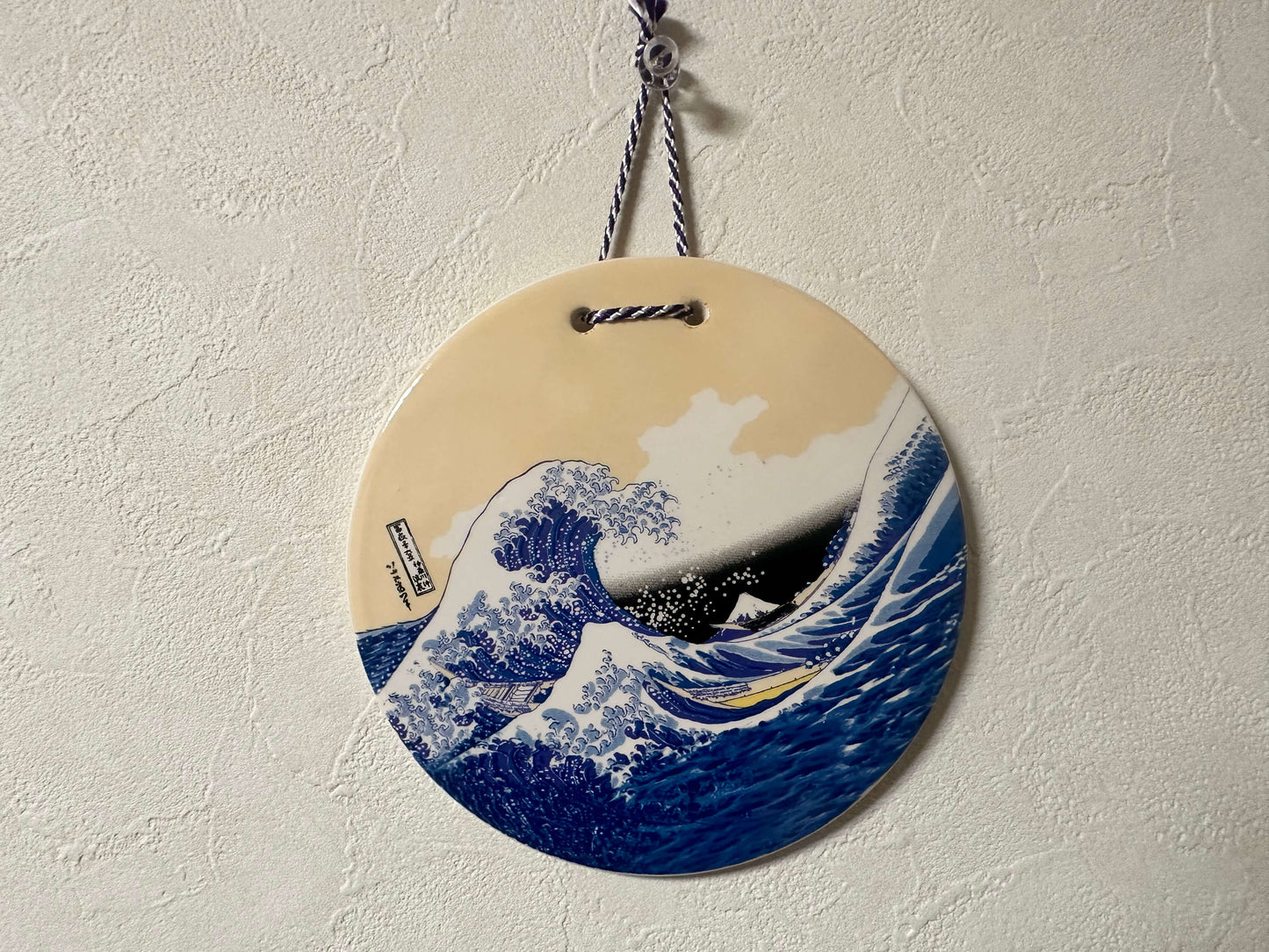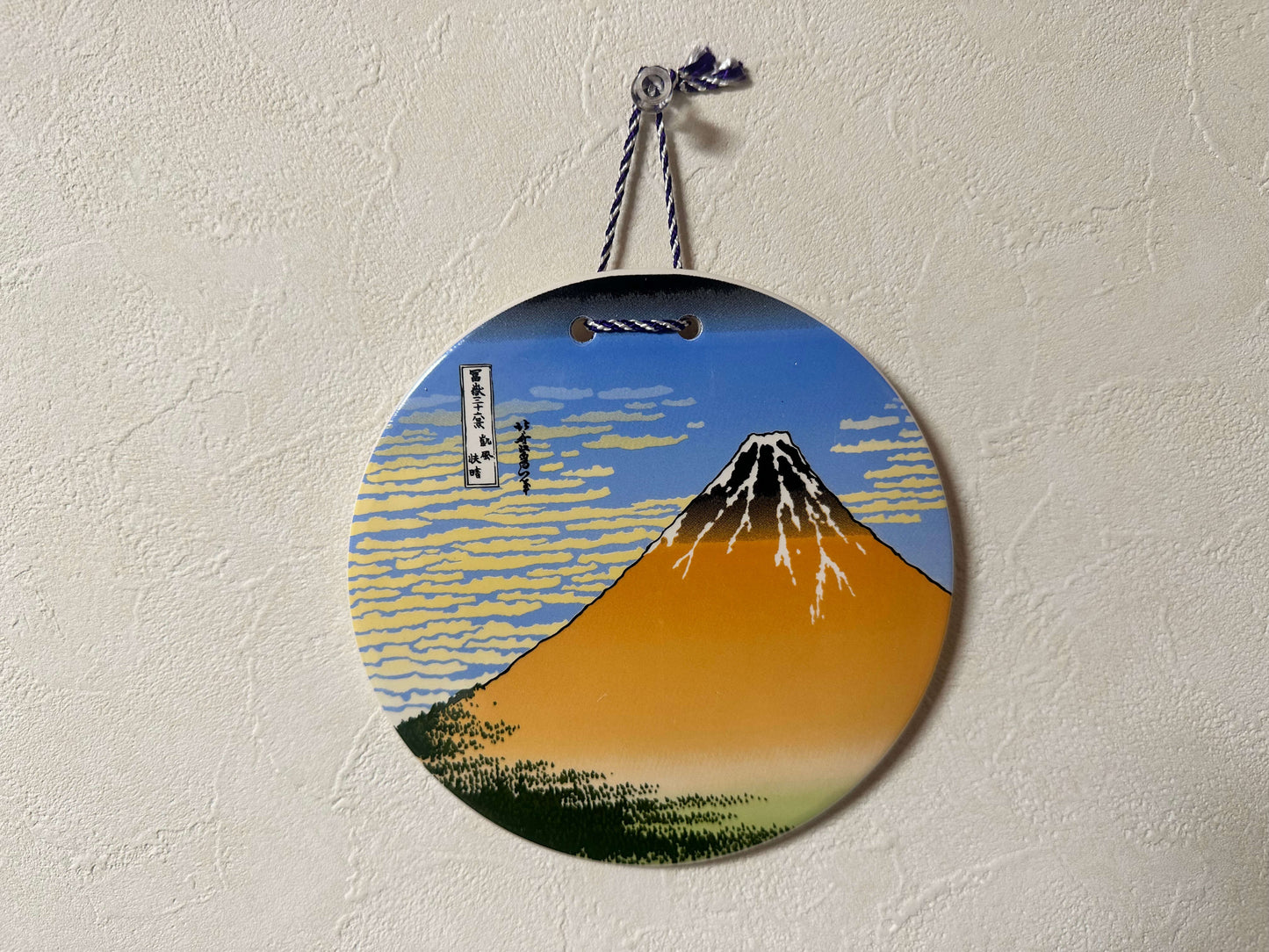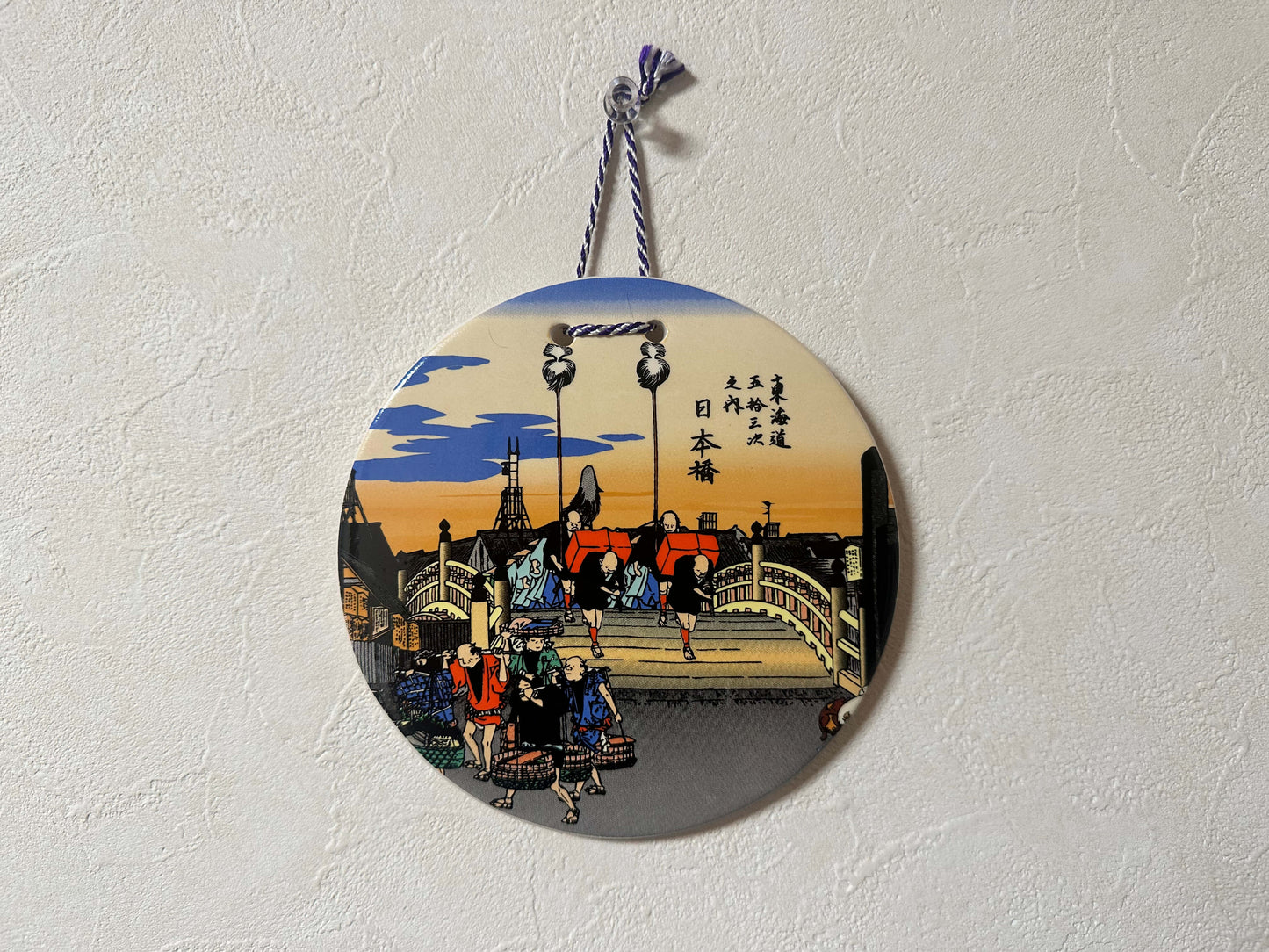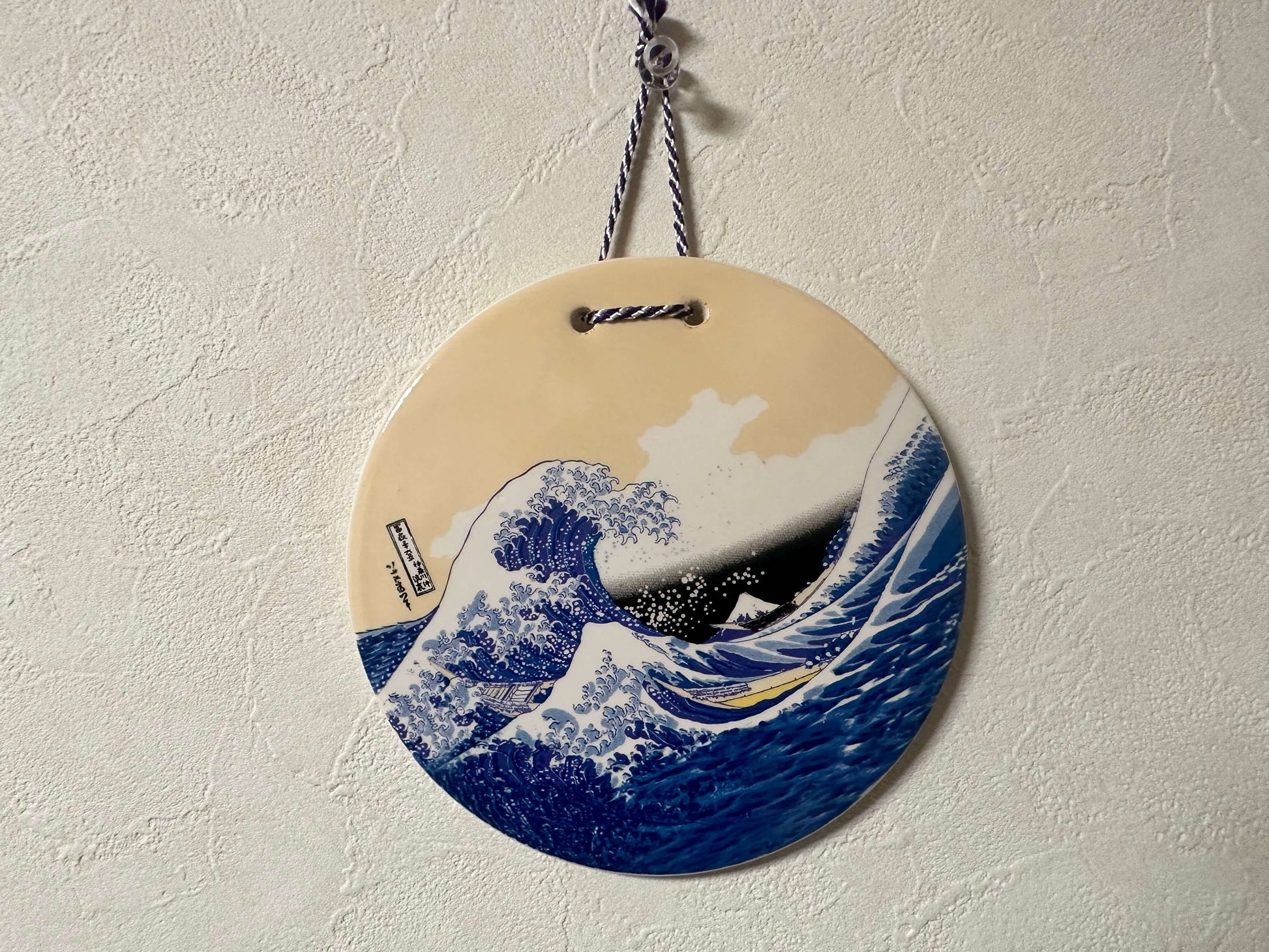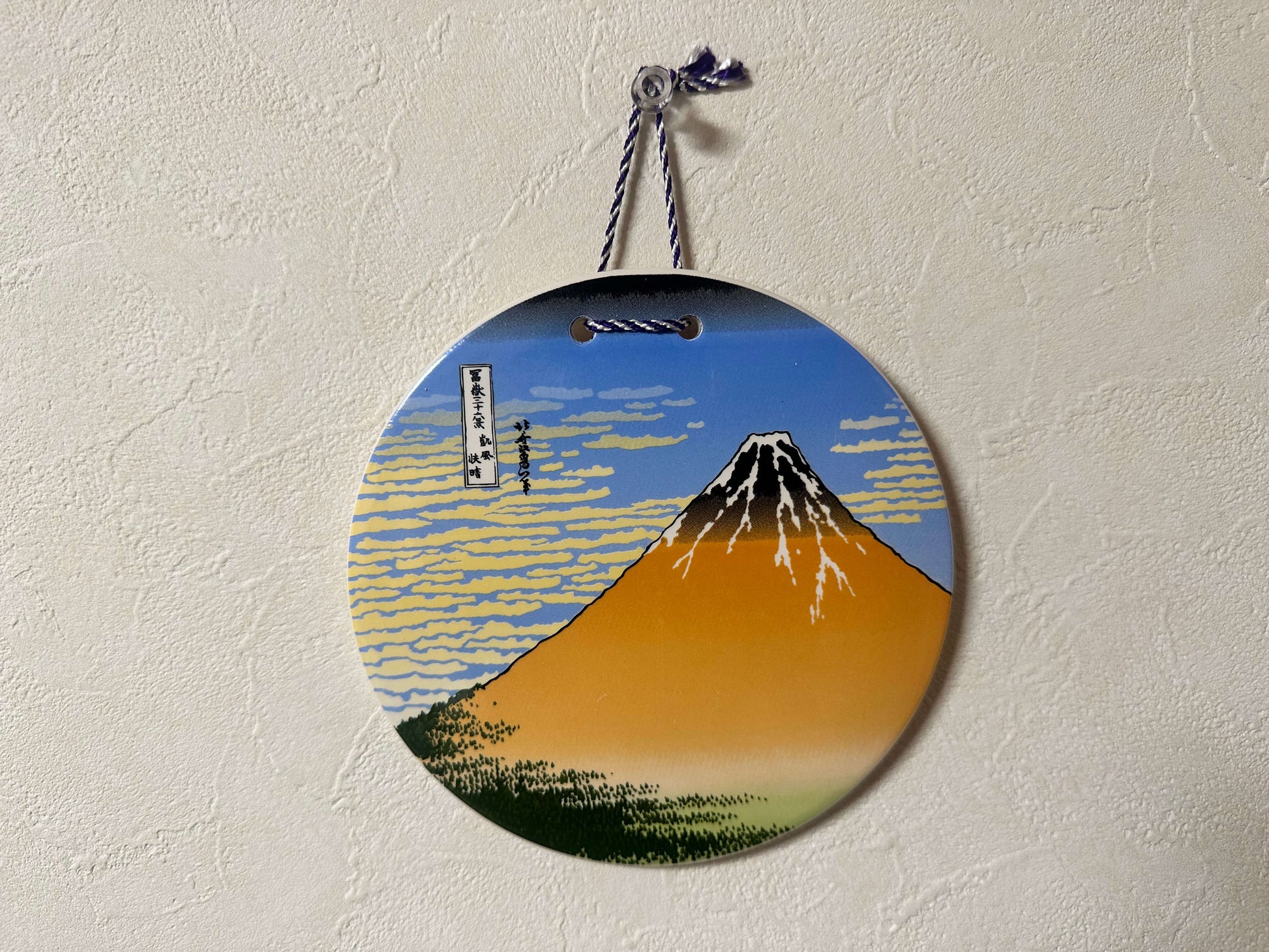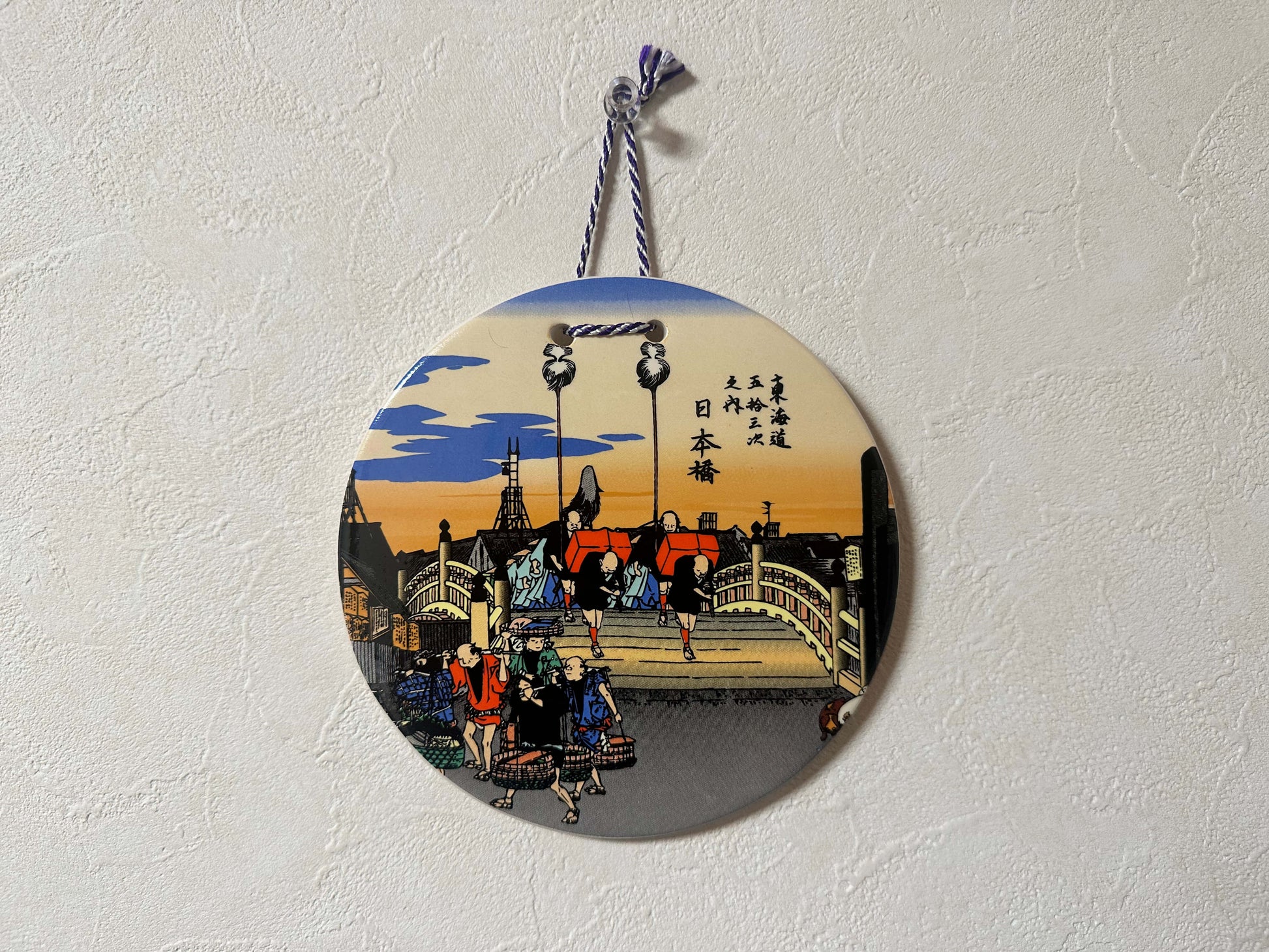盛栄堂-seieido-
Ukiyo-e ceramic plate set of 3 Hokusai Hiroshige
Ukiyo-e ceramic plate set of 3 Hokusai Hiroshige
Couldn't load pickup availability
Nihonbashi (Morning View) (Fifty-three Stations of the Tokaido) The Great Wave Off Kanagawa A set of 3 ceramic plates with Japanese masterpieces.
Ukiyo-e was printed on a ceramic board (material: porcelain / rayon) using a special technique.
Hang it on the wall or use the included stand to display it.
Each product information
Diameter approx. 150mm , thickness 6mm , weight 220g
Katsushika Hokusai (1760~1849)
Born in Honjo, Edo, he became a disciple of Katsukawa Shunsho in 1778 and made his debut under the name Haruro the following year.
He drew portraits of actors, pictures of beautiful women, pictures of sumo wrestlers, etc.
At the age of 40, he changed his name to Hokusai and became active in illustrating reading books. He learned the techniques of Chinese and Western paintings, and by making full use of shading and perspective, he completed ``Thirty-six Views of Mt. Fuji,'' which is said to be the greatest masterpiece of landscape prints.
Hokusai is one of Japan's leading painters, and his works have had a great influence on Western painters such as Van Gogh and Monet.
Clear skies and clear skies (Thirty-six views of Mt. Fuji)
Along with ``The Great Wave off Kanagawa,'' this work is considered one of Katsushika Hokusai's most famous works, and is popular both in Japan and abroad, commonly known as ``Red Fuji.''
A masterpiece representative of Ukiyo-e landscape paintings that vividly and majestically express the majestic Mt. Fuji in simple tones. Another characteristic of this work, which is not seen in traditional ukiyo-e landscape paintings, is that it does not depict humans.
The Great Wave off Kanagawa (Thirty-Six Views of Mt. Fuji)
When many people think of ukiyo-e, this image probably comes to mind. One of Katsushika Hokusai's most famous works. It features dynamically deformed waves unique to Hokusai. The raging waves, the figure of a desperate human clinging to a boat, and Mt. Fuji standing beyond that. A masterpiece that well expresses Hokusai's worldview.
Hiroshige Utagawa (1797~1858)
He was born as the son of Gen'emon Ando, an Edo fire extinguisher, and became a disciple of Toyohiro Utagawa (1773-1829) in his mid-teens. From around 1818, he began publishing works under the name Hiroshige.
In his mid-thirties, he published ``Toto Meisho'' and entered the field of landscape painting, and with ``The Fifty-Three Stations of the Tokaido,'' his lyrical and friendly elegance made him a big hit, establishing him as a landscape painter along with Katsushika Hokusai. established a position. He also demonstrated his talent in flower and bird prints and hand-painted prints, opening up his own unique style of painting.
Nihonbashi (morning view) (53 stations of the Tokaido)
This work is the first work in the 53 Stations of the Tokaido series. A popular work by Hiroshige that depicts the lively scenes of Edo at the time.
Above Nihonbashi is a procession of feudal lords performing ``sankin kotai,'' and in front of the bridge are peddlers on their way home after purchasing fish at the fish market, which very well depicts the lively morning life of Nihonbashi.
Share
